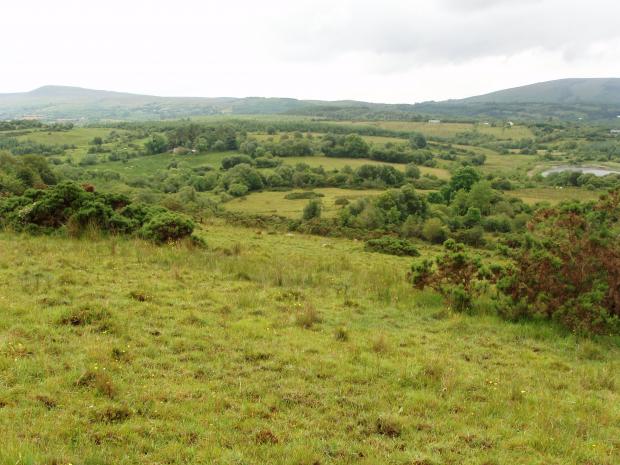
This area is of special scientific interest because of its species-rich wet grassland. Species-rich grassland tends to occur only where land management is not intensive, in particular where traditional farming practices have been maintained. As a result, it is not a widespread habitat in Northern Ireland and is often fragmented, consisting of individual fields, parts of fields or banks. Species-rich grasslands, like those found at Ross, are a particularly scarce resource in Northern Ireland.
Ross is situated on the Fermanagh-Leitrim boundary, 8km southeast of Garrison. The area slopes to the southwest towards the County River. The site is underlain by Carboniferous age rocks, dominated by limestones belonging to the Darty Limestone Formation. These rocks formed in shallow water and are base-rich having a significant calcium carbonate content. The soils at Ross are derived from the parent rock – the resultant soils have poor drainage characteristics and are known as surface water gleys. The lower lying area to the south of the site supports a fen; the soils here are organic rich peats. The diverse topography with both deep and thin soils and resultant soil hydrology at Ross has enabled the development of a complex range of species-rich wet and dry grasslands. Often these differences in type are evident over quite small areas and locally form mosaics of semi-natural vegetation types, for example, fen meadow, rush pasture, fen, wet heath and where drier conditions exist, lowland meadow.
The vegetation at Ross is dominated by wet grassland of the purple moor-grass and rush pastures type, with occasional pockets of drier grassland. Fen meadow is a particular type of purple moor-grass and rush pasture. It occurs on Ross where there is a steady hydrological influence in the soil and is typified by the occurrence of species adapted to both water movement and wetter conditions. Here, species such as meadow thistle and purple moor-grass are constant. Other distinctive species associated with fen meadow vegetation at Ross include tormentil, Devil’s-bit scabious, sharp-flowered rush, lesser spearwort, carnation sedge, tawny sedge, selfheal and the mosses golden-head moss and chalk comb.
Pockets of very species-rich vegetation occur where the mineral soils and shallow peats are flushed and kept wet by base-rich or calcareous, nutrient-poor waters. These flushed areas often contain many distinctive species which include Dioecious sedge, bog pimpernel, knotted pearlwort, common butterwort, common cottongrass, mat-grass and the moss pointed spear-moss.
Where the slope levels out, water movement is much reduced. Species more typical of wet heath are found alongside the rush pasture vegetation in these areas. On the level area to the south of the site is a small area of basin fen. Sedges dominate the sward and include greater tussock-sedge, star sedge, Dioecious sedge, bottle sedge and flea sedge. Herbs associated with these areas include water mint, marsh cinquefoil and marsh pennywort.
The drier areas of Lowland meadow are typically grass-dominated with a wide range of associated herbs. The grass crested dog’s-tail is a constant component of the sward along with red fescue, sweet vernal-grass and heath-grass. Herbs and sedges typical of traditionally managed grasslands are frequent throughout and include Devil’s-bit scabious, common knapweed, meadow buttercup, cat’s-ear and Glaucous sedge.
The variation in topography and related soil hydrology, and the effects of past and present management have resulted in the presence of a wide range of species in a relatively small area. In addition to the vegetation communities described above blue-eyed-grass was recorded in the grassland. It is an Irish Red Data Book species and is protected under the Wildlife (NI) Order 1985. Ross is also an important site for the marsh fritillary butterfly. The grassland supports large quantities of Devil’s-bit scabious which is the larval foodplant for the marsh fritillary.
Related articles
- ASSI Guidance for Public Bodies/Competent Authorities
- Coastal Areas of Special Scientific Interest
- Conservation Management Plans (CMPs)
- European Marine Sites - Marine Special Areas of Conservation and Special Protection Areas
- Introduction to Conservation Management Plans (CMPs) for Northern Ireland’s Special Areas of Conservation
- Marine Conservation Zones
- Marine Protected Areas
- Marine Ramsar sites
- Portrush Coastal Zone
- Special Areas of Conservation
- Special Areas of Conservation for Harbour porpoise
- Special Protection Areas
